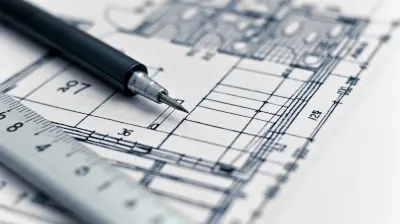13 March 2025
Buying your first home is one of the biggest milestones in life—right up there with getting your first job or graduating from college. If you're like most first-time homebuyers, you're probably equal parts excited and overwhelmed. Getting a mortgage can feel like trying to solve a puzzle where the pieces don’t always seem to fit. But don’t worry—I’ve got your back!
In this guide, we’ll break down everything you need to know about qualifying for a mortgage as a first-timer. Whether you’re just starting to think about buying a home or you’re already scrolling through real estate listings at midnight, this article will give you the tools you need to tackle the process with confidence. 
What Exactly Is a Mortgage?
Before diving in, let’s make sure we're on the same page about what a mortgage actually is. Think of it as a giant loan that helps you buy a house. Since most of us don’t have hundreds of thousands of dollars lying around, we borrow money from a lender and pay it back over time—with interest, of course.It’s kind of like renting money from the bank but with a much bigger commitment. And just like landlords want to know you’ll pay your monthly rent, lenders want to know you’ll reliably pay back your mortgage.
That’s why qualifying for a mortgage often feels like a financial interrogation. But hey, if you know how to prepare, it’s totally doable. Let’s break it down step-by-step. 
Step 1: Understand Your Credit Score
Let’s start with the big one. Your credit score is basically your financial reputation wrapped up in three digits—and lenders are obsessed with it. They use it to gauge how risky it would be to lend you money.What Is a Good Credit Score for a Mortgage?
Here’s the deal:- 750+: Excellent. Lenders will practically roll out the red carpet.
- 700-749: Good. You’ll still get decent rates.
- 650-699: Fair. You might qualify, but rates won’t be as pretty.
- Below 650: It’s rough, but not impossible. There are options like FHA loans that cater to lower scores.
If your credit score isn’t where you want it to be, don’t panic. Fixing it takes time, but focusing on paying down debts, avoiding late payments, and keeping old credit accounts open can help boost it over time. 
Step 2: Save for a Down Payment
You’ve probably heard the term "down payment" before—it’s the chunk of cash you put upfront toward the home’s price. The bigger your down payment, the less you have to borrow, and the lower your monthly payments will be.How Much Do I Need?
It depends on the type of loan, but here are some ballpark figures:- Conventional loans: Typically, lenders ask for at least 5-20% of the home’s price.
- FHA loans: You can get away with as little as 3.5%.
- VA or USDA loans: No down payment at all if you’re eligible.
Now, I know what you're thinking: “20%? Who has that kind of money just lying around?” And you're not alone! Most first-time buyers put less than 20% down. However, keep in mind that if your down payment is less than 20%, you’ll probably have to pay for private mortgage insurance (PMI)—an extra cost added to your monthly bill. 
Step 3: Get Your Debt-to-Income (DTI) Ratio in Check
Lenders don’t just look at how much money you make—they also look at how much you owe. Your debt-to-income ratio is a percentage that shows how much of your monthly income goes toward paying debts like credit cards, car loans, or student loans.What’s a Good DTI Ratio?
- Below 36%: Great. You’re in a solid position.- 36-50%: Doable, but you might face some hurdles.
- Above 50%: It’s going to be tough to get approved.
To calculate your DTI, add up all your monthly debt payments, divide that by your gross monthly income (what you earn before taxes), and multiply by 100. If it’s too high, consider paying down some of your smaller debts before applying for a mortgage.
Step 4: Gather Proof of Income
Think of this as your financial résumé. Lenders will want to see that you have a steady income and that you’re making enough money to afford the mortgage payments.What Will They Look At?
- Pay stubs: Typically from the last 1-2 months.- Tax returns: Usually for the past 2 years.
- Bank statements: To verify your savings and spending habits.
- Additional income sources: If you have side gigs or freelance work, show proof of that as well.
If you’re self-employed, expect a bit more scrutiny. You’ll likely need to provide more thorough documentation, like 1099 forms or profit-and-loss statements.
Step 5: Research Mortgage Options
Not all mortgages are created equal, and as a first-time buyer, you’ve got plenty of options. Make sure you shop around and compare different types of loans to find the best fit for your situation.Common Mortgage Types:
1. Conventional Loans:- Offered by private lenders.
- Require higher credit scores and down payments but often come with lower interest rates.
2. FHA Loans:
- Backed by the Federal Housing Administration.
- Great for first-timers with lower credit scores or smaller down payments.
3. VA Loans:
- Exclusively for veterans, active-duty service members, and their families.
- No down payment required and often lower interest rates.
4. USDA Loans:
- Designed for rural or suburban homebuyers.
- No down payment needed, but income limits apply.
Step 6: Get Pre-Approved
Here’s where things start to feel real. A pre-approval is essentially a lender’s way of saying, “We’ve looked at your finances, and we’re willing to give you a loan up to X amount.”Why is this step so important? For starters, it shows sellers you’re serious, which can give you an edge in competitive markets. Plus, it gives you a clear idea of your budget so you’re not falling in love with homes you can’t afford.
Step 7: Budget for Closing Costs
So you’ve saved up for a down payment, got your finances in order, and you’re ready to buy the house. But wait—there’s one more thing: closing costs.These are the fees and expenses you’ll pay when finalizing the mortgage. They typically range from 2% to 5% of the home’s purchase price.
What Do Closing Costs Include?
- Loan origination fees- Title insurance
- Appraisal fees
- Home inspection costs
- Taxes
Some sellers might agree to cover part of your closing costs as part of the deal, so don’t be afraid to negotiate.












Chantal Wagner
Understand credit scores and debt ratios.
April 5, 2025 at 2:33 AM